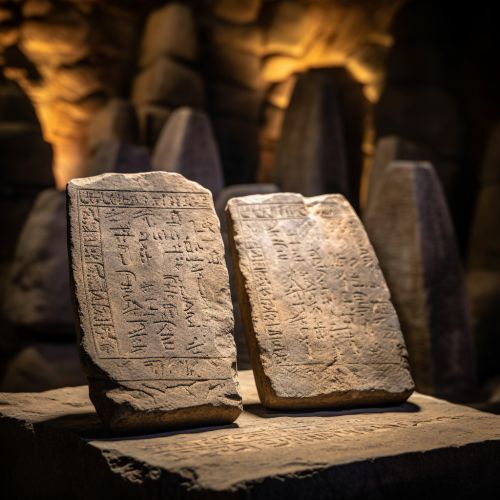Human rights
Definition and Origins
Human rights are the basic rights and freedoms to which all individuals are entitled, often held to include the right to life and liberty, freedom of thought and expression, and equality before the law[^1^]. The concept of human rights has roots in many cultures and traditions, and the development of this concept has been influenced by a variety of historical, political, and social factors[^2^].
The origins of human rights can be traced back to the ancient civilizations of Mesopotamia, India, and China, where early legal codes and religious texts set out certain protections and obligations[^3^]. However, the concept of human rights as we understand it today has its roots in the philosophical and political developments of the Enlightenment era[^4^].


Philosophical Foundations
The philosophical foundations of human rights are based on the principles of dignity, liberty, and equality[^5^]. These principles are often associated with the works of philosophers such as John Locke, Thomas Hobbes, and Jean-Jacques Rousseau, who argued for the inherent worth and autonomy of the individual[^6^].
The concept of dignity, in particular, is central to the understanding of human rights. It is often interpreted as the inherent worth and respect that each individual deserves, regardless of their status or condition[^7^]. This principle is reflected in the Universal Declaration of Human Rights, which states that "recognition of the inherent dignity and of the equal and inalienable rights of all members of the human family is the foundation of freedom, justice and peace in the world"[^8^].


Legal Frameworks
The legal frameworks for human rights have been established through a variety of international treaties and conventions, as well as through national constitutions and laws[^9^]. The most significant of these is the Universal Declaration of Human Rights (UDHR), adopted by the United Nations General Assembly in 1948[^10^].
The UDHR sets out a comprehensive list of rights, including civil and political rights such as the right to life, liberty, and security of person; the right to a fair trial; and the right to freedom of thought, conscience, and religion. It also includes economic, social, and cultural rights, such as the right to work, the right to education, and the right to participate in cultural life[^11^].
In addition to the UDHR, there are a number of other important international human rights instruments, including the International Covenant on Civil and Political Rights (ICCPR), the International Covenant on Economic, Social and Cultural Rights (ICESCR), and the various regional human rights treaties[^12^].


Challenges and Criticisms
Despite the widespread recognition of human rights, there are many challenges and criticisms associated with their implementation and enforcement[^13^]. These include issues related to cultural relativism, state sovereignty, and the prioritization of certain rights over others[^14^].
Cultural relativism, for example, argues that human rights are not universal, but are instead culturally specific. This view suggests that the concept of human rights is a product of Western culture and is not applicable to all societies[^15^]. This has led to debates about the universality of human rights and the extent to which they can be enforced across different cultural contexts[^16^].
State sovereignty, on the other hand, refers to the principle that states have the right to govern themselves without outside interference. This can create challenges for the enforcement of human rights, as states may resist international efforts to hold them accountable for human rights abuses[^17^].


Future Directions
The future of human rights is likely to be shaped by a variety of factors, including technological advancements, environmental changes, and shifts in global power dynamics[^18^]. These factors will present both challenges and opportunities for the promotion and protection of human rights[^19^].
Technological advancements, for example, have the potential to both enhance and undermine human rights. On one hand, technology can be used to monitor and document human rights abuses, to disseminate information, and to mobilize support for human rights causes[^20^]. On the other hand, technology can also be used to infringe upon privacy rights, to spread misinformation, and to facilitate surveillance and repression[^21^].
Environmental changes, such as climate change and resource scarcity, are also likely to have significant implications for human rights. These changes can lead to conflicts over resources, displacement of populations, and increased vulnerability to human rights abuses[^22^].


See Also
- Universal Declaration of Human Rights
- International Covenant on Civil and Political Rights
- International Covenant on Economic, Social and Cultural Rights
- Cultural relativism
- State sovereignty
References
[^1^]: Donnelly, J. (2013). Universal Human Rights in Theory and Practice. Cornell University Press. [^2^]: Ishay, M. R. (2008). The History of Human Rights: From Ancient Times to the Globalization Era. University of California Press. [^3^]: Bielefeldt, H., Ghanea, N., & Wiener, M. (2016). Freedom of Religion or Belief: An International Law Commentary. Oxford University Press. [^4^]: Freeman, M. (2017). Human Rights. Polity. [^5^]: Nickel, J. (2017). Human Rights: A Very Short Introduction. Oxford University Press. [^6^]: Waldron, J. (2012). Dignity, Rank, and Rights. Oxford University Press. [^7^]: Beitz, C. R. (2009). The Idea of Human Rights. Oxford University Press. [^8^]: United Nations. (1948). Universal Declaration of Human Rights. United Nations. [^9^]: Moeckli, D., Shah, S., & Sivakumaran, S. (2014). International Human Rights Law. Oxford University Press. [^10^]: United Nations. (1948). Universal Declaration of Human Rights. United Nations. [^11^]: United Nations. (1948). Universal Declaration of Human Rights. United Nations. [^12^]: Moeckli, D., Shah, S., & Sivakumaran, S. (2014). International Human Rights Law. Oxford University Press. [^13^]: Donnelly, J. (2013). Universal Human Rights in Theory and Practice. Cornell University Press. [^14^]: Freeman, M. (2017). Human Rights. Polity. [^15^]: Donnelly, J. (2013). Universal Human Rights in Theory and Practice. Cornell University Press. [^16^]: Freeman, M. (2017). Human Rights. Polity. [^17^]: Donnelly, J. (2013). Universal Human Rights in Theory and Practice. Cornell University Press. [^18^]: Alston, P., & Goodman, R. (2013). International Human Rights. Oxford University Press. [^19^]: Alston, P., & Goodman, R. (2013). International Human Rights. Oxford University Press. [^20^]: Alston, P., & Goodman, R. (2013). International Human Rights. Oxford University Press. [^21^]: Alston, P., & Goodman, R. (2013). International Human Rights. Oxford University Press. [^22^]: Alston, P., & Goodman, R. (2013). International Human Rights. Oxford University Press.
